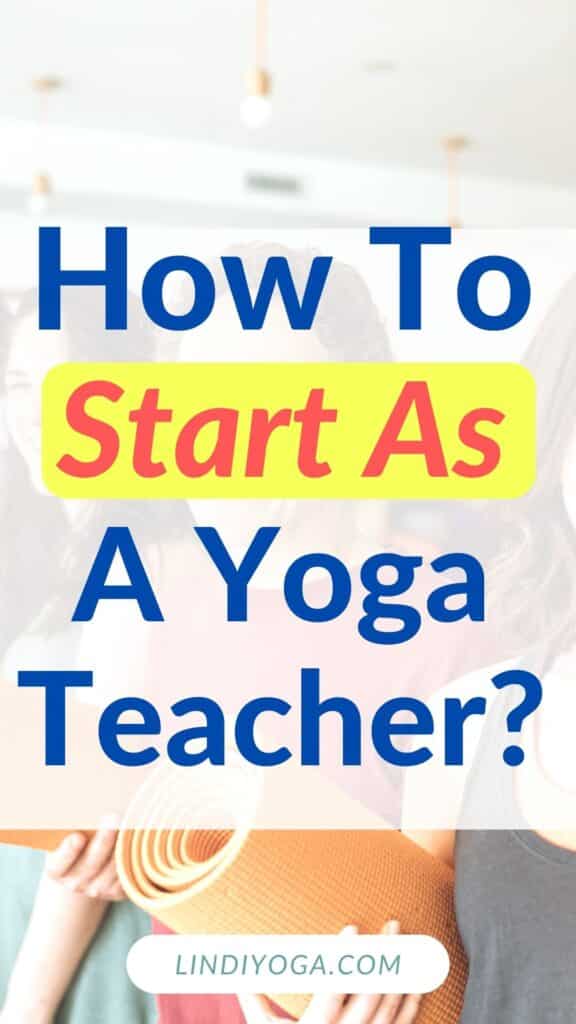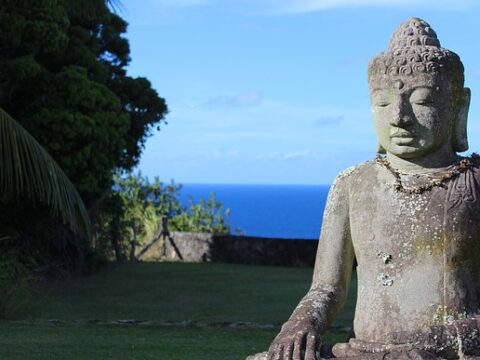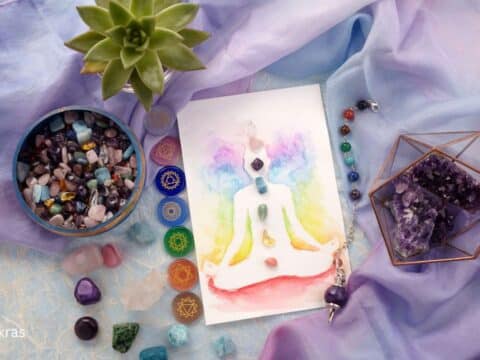If you’re ready to embark on a journey of self-discovery and growth, come join our Yoga Teacher Training program! Here we will guide you through more than just the physical practice – beyond postures lies meditation techniques, pranayama (breathing exercises), anatomy and physiology.
Unlock your true potential with us as an experienced yoga teacher trainer helps unlock personal insight into how to share these teachings with others in order to create positive changes within their lives. Breathe deep and take that first step towards liberation today – this could be life-changing!
Yoga Teacher Video
The Philosophy Of Yoga
Welcome to the first section of your yoga teacher training, where we will dive deep into the philosophy of yoga.
At its core, yoga is not just a physical practice but also a way of life that originated in ancient India thousands of years ago. The word ‘yoga’ comes from the Sanskrit root yuj, which means ‘to yoke’ or ‘to unite.’ This refers to the union between mind, body, and spirit that we strive for through our practice.
Yoga philosophy encompasses many different texts and teachings, including the Yoga Sutras of Patanjali and various Upanishads. These ancient texts provide us with guidance on how to live a meaningful life by cultivating qualities such as compassion, truthfulness, and self-discipline.
Through studying these philosophical concepts and incorporating them into our own lives, we can deepen our understanding of ourselves and our connection to the world around us.
In the next section, we will explore how this philosophy applies specifically to the anatomy and physiology of asanas.
The Anatomy & Physiology Of Asanas
As we dive deeper into the practice of yoga, it’s important to understand the anatomy and physiology of asanas.
The physical postures we perform in our practice have a profound effect on not just our muscles and joints, but also on our internal organs and systems.
Understanding the benefits and risks associated with different asanas can help us modify and adjust our practice according to our individual needs.
Modifications and variations allow us to explore the full range of motion while preventing injury or strain.
By incorporating modifications, we can make each pose accessible for everyone regardless of their level of experience or flexibility.
Remember that every body is unique, so listen to your own body and honor its limitations.
With consistent practice, you will gradually increase strength, flexibility, balance, and focus.
Exploring Pranayama Techniques
Exploring Pranayama Techniques is an essential part of any yoga teacher training program. In this section, we will delve deep into the powerful practice of pranayama and its benefits.
Pranayama refers to the regulation of breath through various techniques that help control the life force energy within us. The scientific research and evidence supporting the effectiveness of pranayama are vast.
Studies have shown that it can improve respiratory function, reduce stress levels, lower blood pressure, enhance cognitive performance, and increase feelings of well-being. There are many variations of pranayama techniques that you can incorporate into your daily practice.
Each technique has specific benefits for both physical health and mental clarity. It’s important to find which ones work best for you as every individual is unique in their needs and goals.
The Art Of Meditation
As we conclude our exploration of pranayama techniques, it is important to remember that the breath is a powerful tool for regulating the mind and body. Through intentional breathing practices, we can cultivate awareness and tap into our innate ability for self-healing.
Moving forward in our yoga teacher training journey, we will delve deeper into the art of meditation. Mindfulness practices are an essential aspect of any yoga practice, as they allow us to quiet the chatter of the mind and connect with our true selves.
In this section, you will learn various meditation techniques that can be used both on and off the mat to enhance your overall well-being. By combining these breathing techniques with mindfulness practices, you will have a potent toolkit that can help you navigate life’s challenges with more ease and grace.
Sharing Yoga With Others
As a yoga teacher, it’s essential to establish meaningful relationships with your students. By creating an environment of trust and respect, you can encourage them to grow in their practice and feel supported along the way.
To do this effectively, take time to get to know each student on a personal level. Ask about their goals and challenges as well as what they hope to gain from practicing yoga.
Teaching techniques are also crucial when sharing yoga with others. It’s important to have a clear understanding of the fundamentals of yoga, including alignment principles, breathwork, and meditation practices.
Additionally, consider offering modifications for various skill levels and physical abilities so that all students can participate comfortably.
Finally, remember that teaching is a lifelong learning process – continue expanding your knowledge through workshops, training programs, and self-study.
Three Important Teaching Techniques:
- Demonstrate poses slowly and clearly while giving verbal cues.
- Allow space for questions during class or after class.
- Modify poses based on individual needs.
By focusing on building positive student relationships and utilizing effective teaching techniques, you can create a safe and supportive space for your students to deepen their practice and experience freedom both physically and mentally.
Remember always; be patient, compassionate, attentive towards every student irrespective of his/her proficiency level because everyone comes into the classroom seeking something different!
Frequently Asked Questions
What Is The Average Cost Of A Yoga Teacher Training Program?
As a seasoned yoga instructor, I often get asked about the cost of teacher training programs. Let me tell you this – it’s not just about the numbers. It’s about investing in yourself and your passion for spreading the transformative power of yoga.
That being said, the average cost range for a quality program can be anywhere from $2,000 to $5,000. But don’t let that deter you! There are financing options available such as payment plans or scholarships offered by certain schools.
Remember, this is an investment in your future and ultimately your freedom to live a fulfilling life sharing yoga with others.
Are There Any Prerequisites Or Qualifications Required To Enroll In A Yoga Teacher Training Program?
Before embarking on your journey as a yoga teacher, it’s important to consider the experience needed and possible age limits for enrollment in a training program.
While some programs may require prior yoga practice or teaching experience, others welcome beginners with open arms.
It’s also worth noting that there is no set age limit for becoming a yoga teacher – anyone can pursue this path at any stage of life.
Ultimately, what matters most is your passion for yoga and your commitment to sharing its benefits with others.
So if you feel called to become a teacher, don’t let these factors hold you back – embrace the freedom that comes from pursuing your dreams!

How Long Does It Typically Take To Complete A Yoga Teacher Training Program?
When it comes to completing a training program, flexibility is key. Whether you opt for an online or in-person course, the length of your journey will vary based on your individual pace and schedule.
But don’t let that intimidate you! Remember, yoga is all about finding freedom within yourself. Just like any other aspect of practice, teacher training requires dedication and discipline, but also allows room for growth and exploration.
So take your time, enjoy the process, and trust that with commitment and effort, you’ll emerge as a confident and knowledgeable teacher.
What Kind Of Job Opportunities Are Available For Certified Yoga Teachers?
As a certified yoga teacher, you have many job opportunities available to you.
Corporations are now recognizing the benefits of providing yoga classes for their employees and are seeking qualified instructors to lead them.
Additionally, there is a growing demand for special populations in yoga such as prenatal, children, seniors and those with disabilities.
With your expertise in these areas, you can offer private sessions or teach at studios that cater to these groups.
The beauty of being a certified yoga teacher is that you have the freedom to create your own schedule and work on your terms while helping others find peace and balance through the practice of yoga.
Can I Teach Yoga Internationally With A Certification From A Specific Country?
When it comes to spreading the light of yoga across borders, one might wonder if a certification from a specific country is enough.
Well, just like how each asana has its own unique benefits and requirements, international recognition and accreditation requirements vary too.
It’s essential to do your research before diving into teaching in another country.
Remember that freedom lies within knowledge – not only of different cultures but also their regulatory bodies’ standards for yoga teachers.
With dedication and determination, you can embark on this journey with ease while expanding your horizons globally!
Conclusion
I encourage all aspiring yogis to pursue their passion and enroll in a program that suits their needs.
Whether you’re looking for an immersive experience or a more flexible schedule, there are plenty of options available.
With dedication and hard work, you can become a certified yoga teacher and share your knowledge with the world.
Imagine yourself standing on a beautiful beach, surrounded by students who have come from all corners of the globe to learn from you.
Your words flow effortlessly as you guide them through each pose, creating a sense of peace and harmony within their bodies and minds.
So take the first step towards your dream career today and explore the many opportunities available in the world of yoga.
With determination and commitment, anything is possible!



